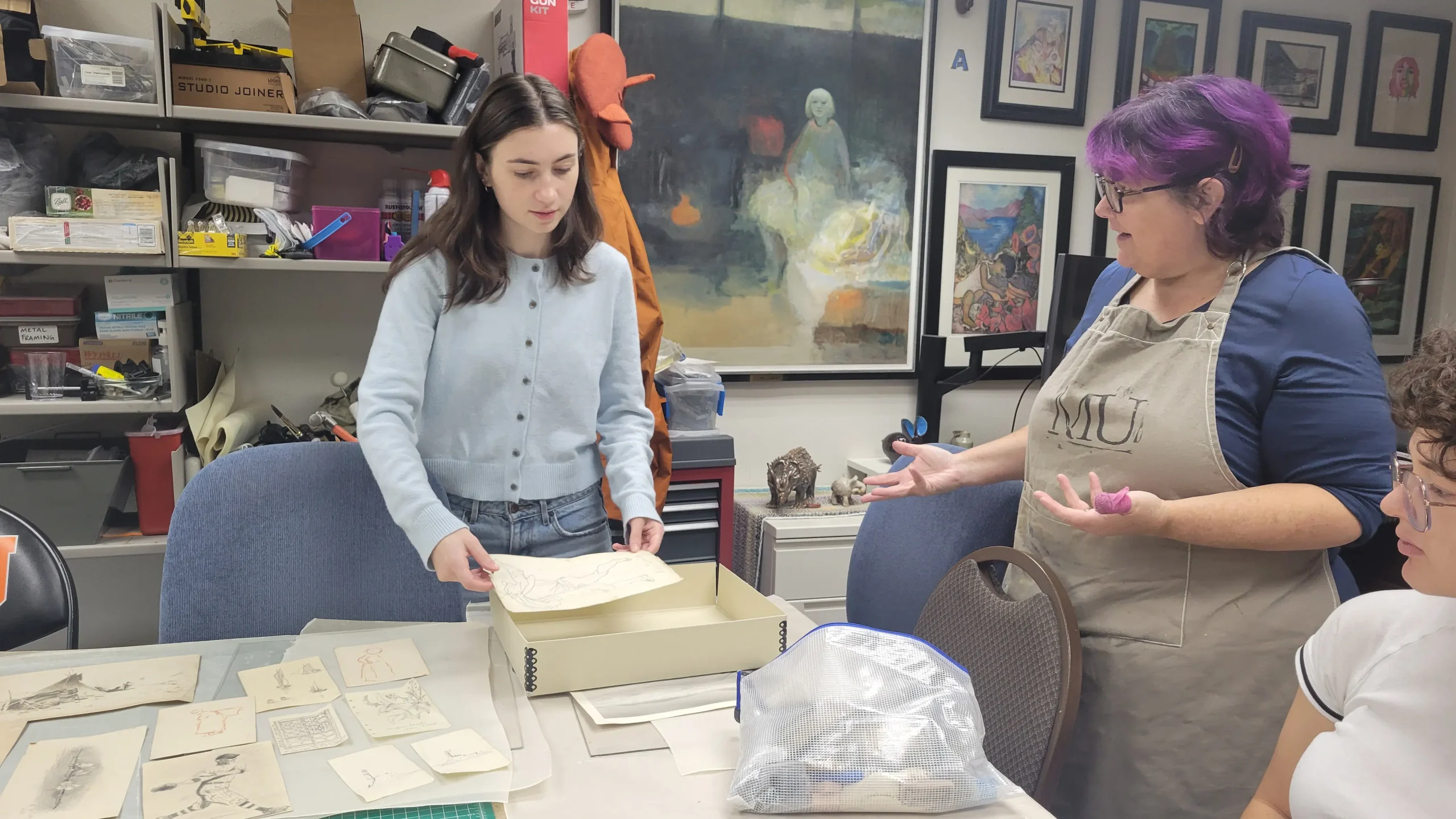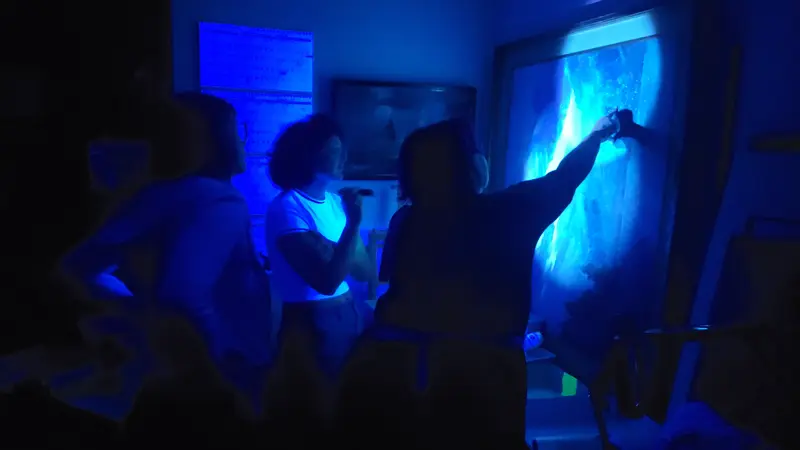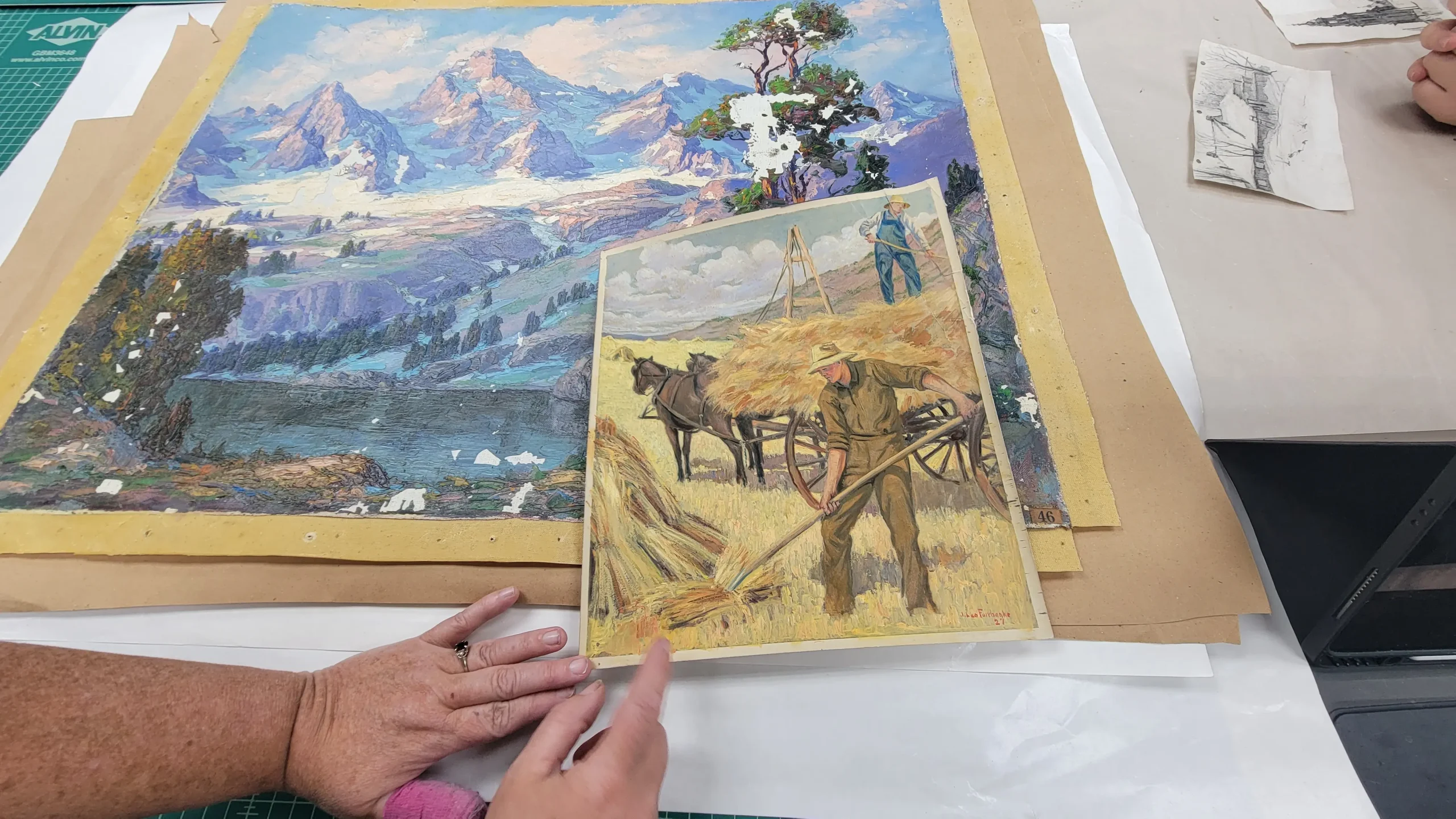Hidden deep under the east wing of the Memorial Union, nestled among a labyrinth of basement rooms, sits a small art studio where students are receiving a world-class lesson on art conservation and restoring the works of several well-known artists.
Under the enthusiastic guidance of Ange Purviance, curator of the MU Gallery and Collection and an OSU graduate, a team of student workers have been cleaning, restoring and displaying pieces in the MU collection for years while learning skills that could take them to galleries around the world.
“We operate under the principles of ‘Don’t do harm, stabilize and make all our work reversable,’” Purviance said. “I tell students we don’t want to have future us’s cursing our names because of what we’ve done.”

A team of around 10 student employees at a time work with Purviance to clean and mitigate damage on the existing MU collection, as well as to do restoration work on new pieces from collections that have been recently donated to the MU. Currently the students are working on two large donations, including a number of paintings and drawings by J. Leo Fairbanks, a former OSU art professor from the turn of the last century who was a prolific artist. Students have already restored a number of the pieces from the new collection, which are now hanging in the MU Concourse Gallery.
 Additionally, the MU offers a lending library of artwork to faculty and staff of the MU and SEC to borrow for their offices, so there is a large and moveable selection of art on display at all times. This means more wear and tear and more need for restoration work.
Additionally, the MU offers a lending library of artwork to faculty and staff of the MU and SEC to borrow for their offices, so there is a large and moveable selection of art on display at all times. This means more wear and tear and more need for restoration work.
“The MU has a long history of conserving and restoring the work within the collection through apprenticeships,” Purviance said. “Not only is this a major cost-saving endeavor, but it provides a unique learning experience for students in a highly competitive field, with very few opportunities to learn, especially at the undergraduate level.”
Esme Gonzalez, an art major with a minor in art history, said she has learned an enormous amount about restoration techniques during her time as a part of the MU art team. She pointed out a moody coastal piece on the wall by early 20th century painter Maurice Ball, which was in desperate need of repair and cleaning.
“It was so much fun to work on it,” Gonzalez said. “We did so many different things to it. There was a lot of cracking. We had to retouch the paint and there were rips; some of the areas were just disgusting. We had to clean up the back of it because it was just so nasty.”
The painting was in such bad shape that the students worked with relatively new techniques to try and save the piece, including using Japanese kozo paper and fish glue to stabilize it, removing the original backing and using conservation paint to color match and fill in areas.
 “It was hard and tedious work,” Gonzales said. When the piece was finally restored to an almost new version of itself, the team placed it in a new frame and gilded the frame to match the era of the painting.
“It was hard and tedious work,” Gonzales said. When the piece was finally restored to an almost new version of itself, the team placed it in a new frame and gilded the frame to match the era of the painting.
Jamie Livingston is a junior in art history who has just joined the art team. Her job is working on caring for a stack of J. Leo Fairbanks drawings that stretch back to his childhood days, and included a number of his paintings. She said there are only a handful of schools in the country that offer graduate programs in art conservation and restoration, so she’s grateful for the opportunity for hands-on experience with so many different techniques.
“I’m doing a lot of erasing surface-level grime and flattening prints and photos,” she said, noting that many of the pieces she’s working with have never been on public display before. “It’s so fun looking through all the art.”
Purviance said having access to these recently donated collections is especially exciting.
“We are the first ones who have seen these pieces in many years,” they said. “It is magical and humbling.”
 Some pieces need a “bath” to clean them up from years of damage and oxidation. Others need stabilizing. Others need touch ups. Purviance said every piece requires judgment calls, creativity and patience. The reward is bringing important pieces back to life.
Some pieces need a “bath” to clean them up from years of damage and oxidation. Others need stabilizing. Others need touch ups. Purviance said every piece requires judgment calls, creativity and patience. The reward is bringing important pieces back to life.
“Some of these paintings were so dark and yellow with age, that when you clean them up it’s like looking at a (Hayao) Miyazaki drawing,” they said.
Although not every student will find a job in a museum or gallery, Purviance is confident that they’ve gained such a wide variety of skills from the work that they’d be able to set up their own shops and accept art restoration projects of their own.
For Livingston, being able to learn hands-on conservation as an undergraduate is an exciting opportunity to connect her art studies with something very tangible.
“To be able to touch something that’s 100 years old, that’s what drew me to conservation.”
By Theresa Hogue

Do you have a story for The Advocate? Email editor@corvallisadvocate.com


